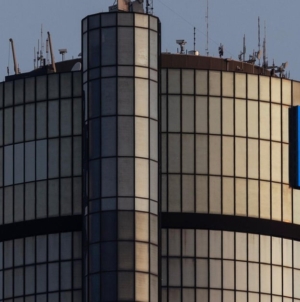-
Marriott International Launches Hungary’s First Branded Residence in Iconic Round Hotel - 25 mins ago
-
Who Is Desiree Leigh Grace? DOJ Fires Alina Habba’s Replacement - 30 mins ago
-
FDA panel on SSRI antidepressants in pregnancy raises alarms - 37 mins ago
-
King Of The Mountain? Rich Hill, 45, Matches MLB Mark For Most Teams - 45 mins ago
-
Message of New Housing Loan Is to Help People Get Their First Home - 58 mins ago
-
Kitten Gets Trapped Under Woman’s Car, No One Prepared To Give Up Hope - about 1 hour ago
-
Children’s Hospital L.A. ends transgender program despite state law - about 1 hour ago
-
Amanda Gutierres extends Brazil's lead to 3-0 in 60' over Paraguay - about 1 hour ago
-
Over 50 Spas Across Hungary Join the Celebration - 2 hours ago
-
Hershey’s Price Hike Explained – Newsweek - 2 hours ago
Pew finds nation divided on whether the American Dream is still possible
About half of Americans still think the American Dream — the idea that anyone can get ahead through hard work and determination — is achievable, according to findings released Tuesday by Pew Research Center.
While 53% say the American Dream remains possible, another 41% believe the life of relative economic security the notion once conjured up is now out of reach, the survey of 8,709 U.S. adults found. That divide roughly held regardless of race, ethnicity, partisanship and education of respondents, the nonpartisan think tank found.
The gap proved wider by age and income, with older and wealthier Americans more likely to declare the American Dream to still be feasible, Pew stated.
Americans 50 and older are more likely than younger adults to say the American Dream is still possible, with about two-thirds of those 65 and older, or 68%, expressing this view, as did 61% of those 50 to 64, according to Pew. Younger adults are less optimistic, with only four in 10, or 42%, under 50 saying it is still possible to achieve the American Dream.
Sixty-four percent of upper-income Americans say the dream still lives, versus 39% of lower-income Americans — a gap of 25 percentage points. At the center, 56% of middle-income respondents agree the American Dream continues, Pew said.
While relatively few, or 6%, voiced the view that the American Dream was never possible, that number nearly doubled to 11% among Black Americans surveyed.
The findings may illustrate wishful thinking on the part of some respondents, depending on how one calculates what it takes to be living the American Dream. An analysis late last year from financial site Investopedia found that the American Dream costs about $3.4 million to achieve over the course of a lifetime, from getting married to saving for retirement.
That estimate would put the dream out of reach for most folks, given that the median lifetime earnings for the typical U.S. worker stands at $1.7 million, according to researchers at Georgetown University.
Further, multiple studies have shown that geography is key to a person’s future success, with where you start out in life largely determining where you end up. Growing up in a more affluent neighborhood offers advantages such as a better education and access to healthier food, for instance.
Source link































